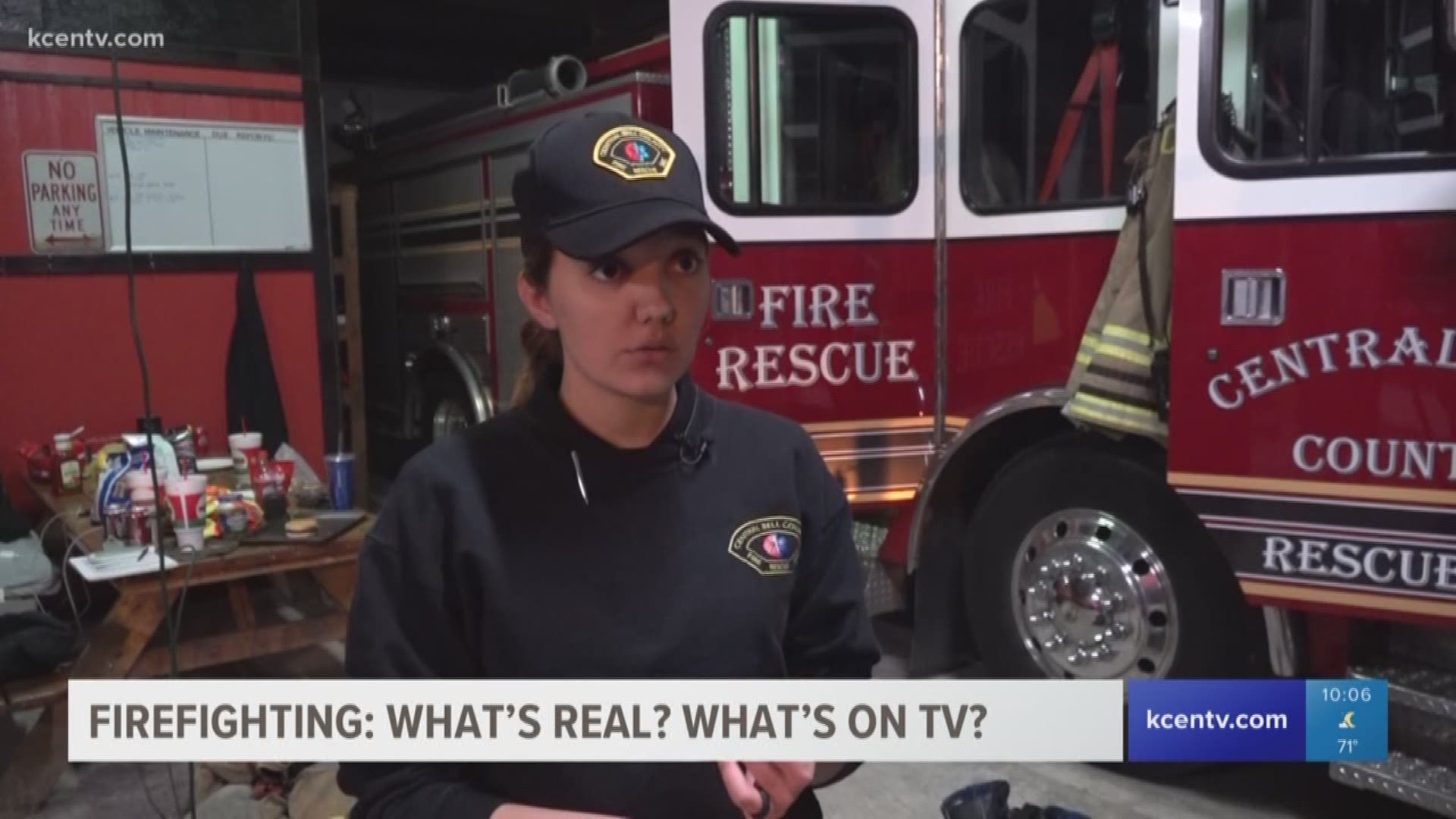BELL COUNTY, Texas — The environment of a fire department makes for great TV drama, and NBC's "Chicago Fire" is no exception.
Considering that, what do real life firefighters think of the way their job is depicted on prime time TV?
Channel 6 reporter Andrew Moore rode along with Central Bell County Fire and Rescue on the job to find out.
It turns out, the show has quite a few fans around the local department.
What does the show get right about the life of a real firefighter?
“Obviously, the drama with the relationships, that’s not as accurate,” Shift lead Kelseigh Castillo said. “But the stress that they show and the tension that they show on calls, that is very real.”
Castillo said "Chicago Fire" captures the emotion that firefighters go through. In real life, Castillo said that emotion doesn’t always show when they are doing the job on scene, but it is always in the back of the team’s minds, especially when firefighters have to go inside a structure.
Castillo said the camaraderie on the TV show is very real on the job.
“One of their guys will get trapped in the house fire, and the emotion that the guys on the outside go through… The fear that they kind of have of ‘is it going to be ok,’ the brotherhood that they have is exactly how we are,” Castillo said.
What does the show get right when it comes to doing the job?
- Getting to the scene fast
Firefighters at Central Bell County Fire and Rescue have to be geared up and in the truck in 90 seconds or less. Firefighters on the main truck have their boots and pants ready to go next to their pre-assigned truck position.
At the beginning of a shift, the crew finds out what their role will be when they respond to a fire, so everyone knows exactly what to do when they get on scene.
Firefigher Jozlyn Boykan said the show regularly portrays firefighters putting on bunker gear, connecting to a water source and setting up a command structure.
“It’s a fair representation when it comes to the public’s view, but when you get down into it, there are things that you notice are a little off,” Boykan said.
2. Approaching the situation.
Firefighters waste no time when someone's life is on the line. That's the case whether it's on TV or in real life.
“If there are people in the house, we are going inside,” Castillo said. “There is no ifs, ands or buts about it.”
In "Chicago Fire," the team generally stays in constant contact as it moves into a building and works as one unit through the whole operation.
Firefighters who come out of a building are told they have to “rehab," which means they have to rest and drink water for a period of time to prevent heat stroke or heart issues.
What does the show get wrong or exaggerate?
- Walking in, standing up
“Probably the first one is running into a building standing up,” Castillo said. “The safety reasons, the smoke, you lose your visibility.”
It’s probably much easier to film an action scene when firefighters are standing up, but in real life, they will run through a building with heavy smoke or fire instead of walking. Castillo said that approach is better for visibility to find people, and there's a much lower chance of falling and getting injured.
Firefighters often won’t go into an engulfed building, unless they need to make a rescue because of the dangers of structure collapse.
2. Taking risks, going rogue
In the first episode of season seven, Matthew Casey slid into an elevator shaft to save someone as the elevator continued to fall. It was a shocking moment that surprised the team.
In real life, Castillo said, that shouldn’t happen.
“For the most part, we don’t have people go rogue. You are going to get yourself hurt or killed, other people hurt or killed," Castillo said. “That hardly ever happens.”
Castillo said the only time a teammate would put themselves in danger without working with the team was if they needed to act immediately to pull a person out of the fire. When one firefighter attacks a fire, Boykan said there is always a rapid intervention team preparing to go and save them if needed.
"When fighting a fire, you have the initial team, the initial attack, and then we have a RIT team formed," Boykan said. "We have a bottle here if they have to rescue a downed firefighter."
3. Panicking
While firefighters get to the scene fast, it's against protocol to rush into situations and panic.
“I get on scene, I grab the hose and I walk to the house,” Boykan said. “Every single thing we’ve rehearsed and we’ve done in training. We’re making sure that when we are on scene you are not trying any Hail Marys. You’ve practiced this before.”
Castillo said she will tell teammates to slow down or take a breath as they approach the situation. The team will make a plan, then execute it.
Castillo said it is also important for the public that the team stay under control and not look afraid.
What else do people not know about your job?
Castillo said firefighters can be hurt in a variety of ways, including roof collapses and falls, but the biggest threat is something else entirely.
“The biggest injury that firefighters have is cardiac issues, heart attacks in the middle of fighting a fire. It can be the stress, the heat, anything can cause it,” Castillo said.
Even when firefighters are in shape, heat exhaustion and the adrenaline that kicks in during a fight can complicate things. Castillo said that guys as young as 22 or 23 can have heart issues going into a fire.

